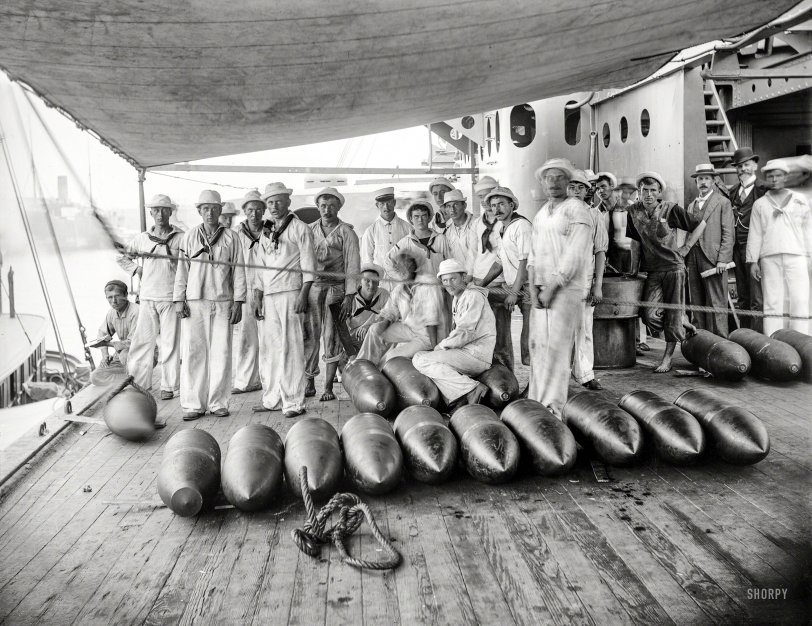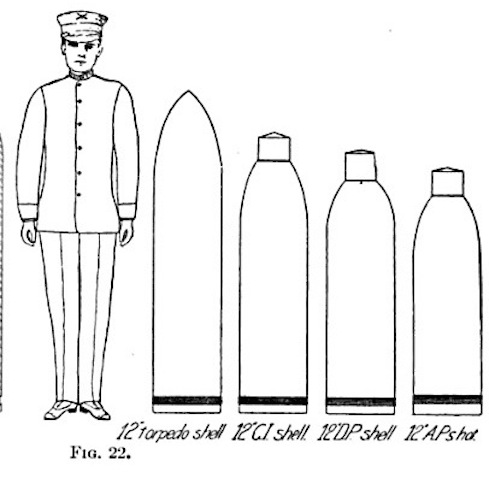


Framed or unframed, desk size to sofa size, printed by us in Arizona and Alabama since 2007. Explore now.
Shorpy is funded by you. Patreon contributors get an ad-free experience.
Learn more.

- Heckuva remote control!
- Sometimes — Things Go Bump!
- I SEE THE LIGHT
- Union Switch and Signal Company
- Get That Light Out Of My Eyes
- Eggs. Eggs. Eggs. The Egg Man is Here!
- Foreboding caption
- Famous Hollywood faces
- Not just S&P
- re: Those things in the jar
- Up In Smoke
- Medical Smoking
- Quick fix
- A Quink Comment
- If You’re Like Me, Never
- Delivering the News
- U.S.A.
- S&P
- 1940 Zenith radio model 6G601
- Quality goes in before the name goes on!
- Snazzy skirt
- Carbon Arc Lamps
- Illuminate us
- I remember it well
- I can't prove it
- Complicated then, forgotten now
- Bryan-Stevenson
- Skinny is as skinny does
- How do you rest in peace
- Riding the footboards
Print Emporium
Don't Mess With Texas

Circa 1900. "U.S.S. Texas discharging ammunition." The Navy battleship nicknamed "Old Hoodoo." 8x10 glass negative by Edward Hart. View full size.
Blunt End First
The projectile at left is a "capped" armor piercing shell. Literally, the nose had a blunt cylindrical cap on it that helped in penetrating armor plate on the side of a warship. It seems counter-intuitive, but the extra metal on the tip distorted the armor for a fraction of second before the point hit. This stretched the armor and gave the main body of the projectile added penetrating power.
Here's an illustration from a 1910 Coast Artillery textbook showing several of these capped AP projectiles. (Couldn't find a USN illustration.)

Barefoot sailors
Both of them must have been stokers. Were their shoes not allowed on the main deck?
Odd man out?
The shell on the far left appears to have some sort of blunt attachment on the nose. Considering that all of the other shells lack ballistic or armor-piercing caps, could it be an experimental cap?
Pointy End First
If those are armor-piercing rounds, the fuses would be in the bases. They were delayed-action projectiles, so the fuse had to protected from the force of impact.
By contrast, high-explosive rounds were designed to explode on impact and featured nose fuses.
Either way, you didn't want to be on the receiving end.
Fuseless shells
I think that those shells in the foreground may be armor piercing rounds
Sister ship
Texas was rated as a second class battleship and was a sister to the Maine. She mounted 12 inch guns, and the shells seen are practice rounds. Live shells would have the fuses in the nose. Texas fought alongside others at the battle of Santiago in 1898 where the Spanish fleet was wiped out.
Work safety, again
850 pounds per shell, roundabout. Fancy to have your bare toes rolled over by that.
What are those shells without a fuse? Blanks for target practice? Or is the fuse mounted in the back?
























On Shorpy:
Today’s Top 5